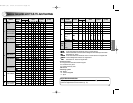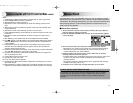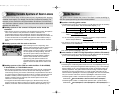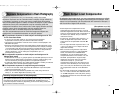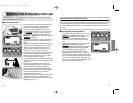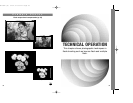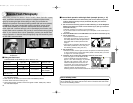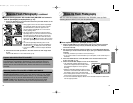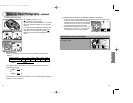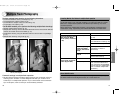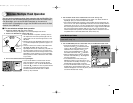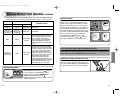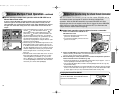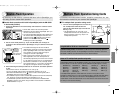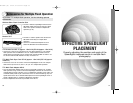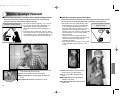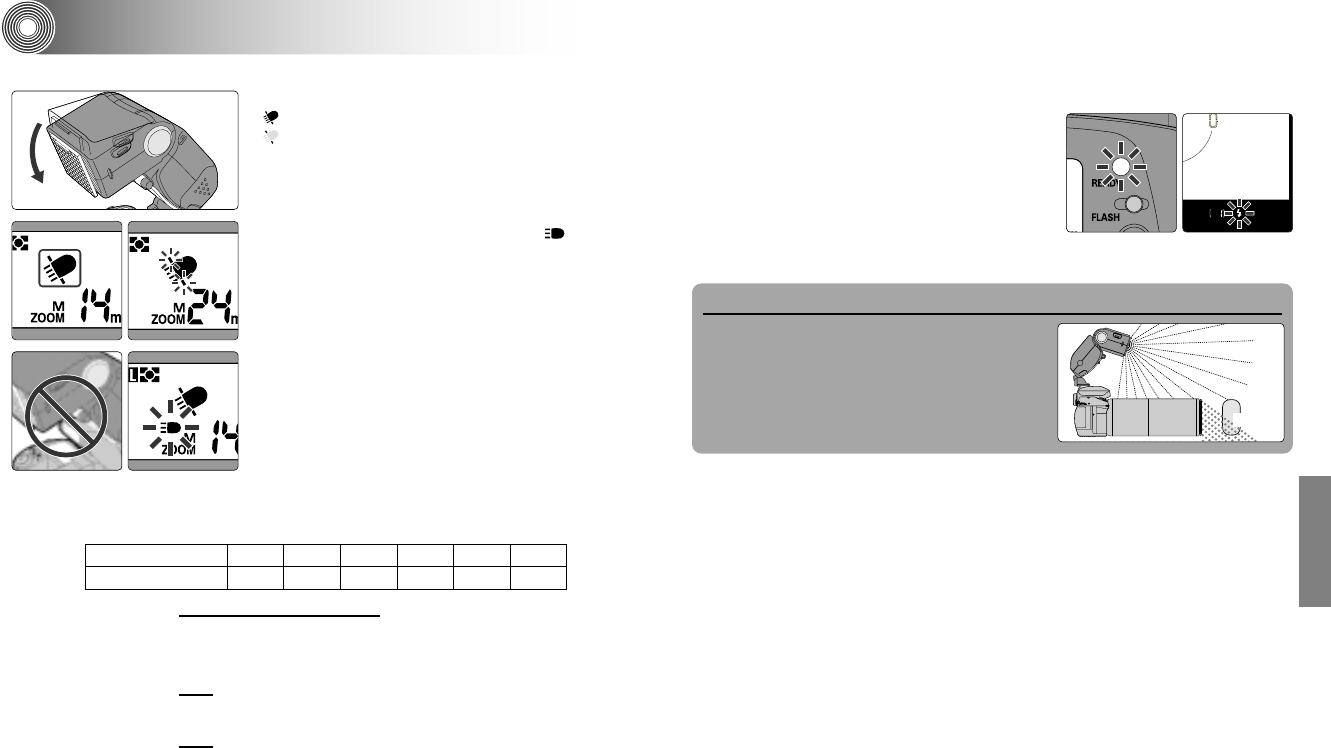
44
Technical Operation
Close-Up Flash Photography—continued
5. Tilt the flash head down.
• Tilt the flash head down to –18°.
• is displayed in the LCD panel.
• blinks if the wide-flash adapter is not attached.
Attach the wide-flash adapter for close-up flash
shooting.
• The camera’s built-in Speedlight cannot be used
when flash head of the SB-50DX is tilted down.
When the built-in Speedlight is activated,
blinks. Press the camera’s Speedlight down to
retract it.
6. Set the aperture.
• Refer to the table below and use the following equation to determine the
aperture.
ISO film speed 25 50 100 200 400 800
Factor (m/ft.) 1.4/4.6 2/6.6 2/6.6 4/13 4/13 5.6/18
f/stop ≥
factor
flash-to-subject distance
For example, with a subject 0.5m (1.6 ft.) away using ISO 100 film, the
suggested aperture is:
f/stop ≥
2
= 4
0.5
Or,
f/stop ≥
6.6
= 4
1.6
In this instance you should use at least f/4 or even smaller aperture (larger f-
number), such as f/5.6 or f/8.
7. Compose, focus, confirm the ready-light comes on, then shoot.
• If the ready-light on the SB-50DX and the camera’s viewfinder ready-light fi blink
for approx. 3 sec. after shooting, the flash has
fired at its maximum output. This may indicate
underexposure has occurred. To compensate,
use a wider aperture (smaller f-number).
• Vignetting due to lighting situation, lens in use,
focal length, etc. may occur in close-up flash
shooting. Test shooting is recommended.
Usable lenses for close-up flash shooting
With a long-size lens, light may be obstructed
by the lens barrel.
45
Subject
SB-50DX (E) 02.12.9 2:33 PM Page 44



